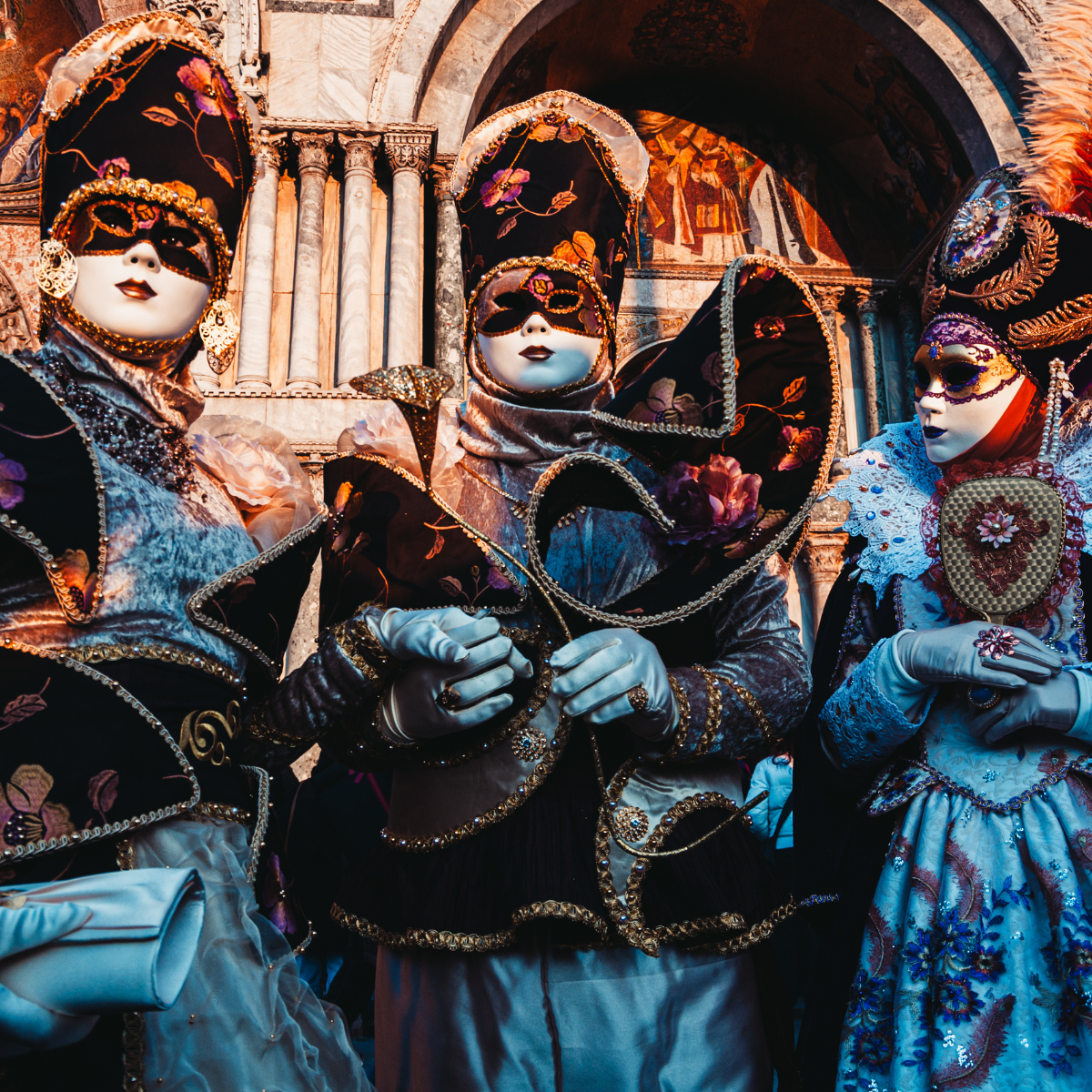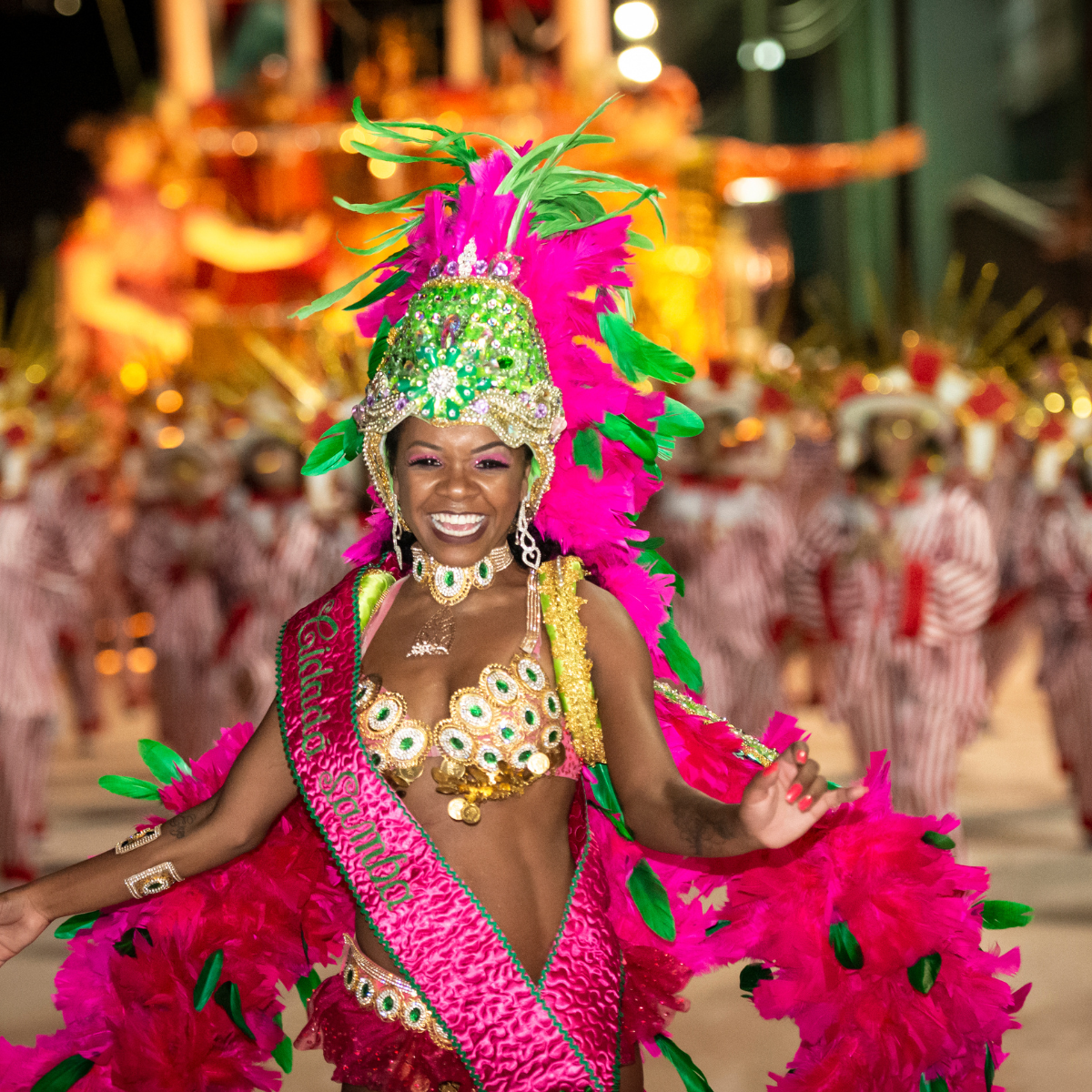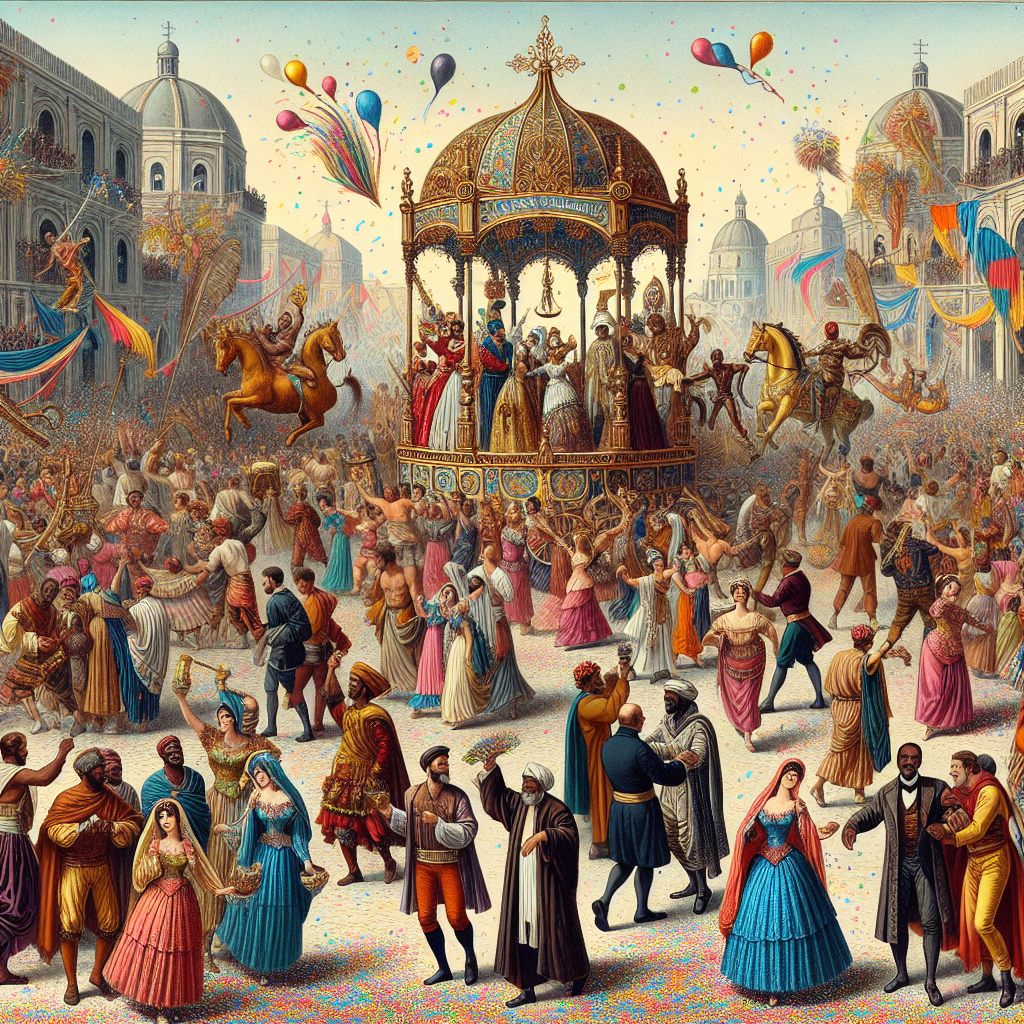Have you ever wondered how Carnival, this explosion of colors, music and joy, became one of the biggest celebrations in the world? What began as ancient pagan festivities has evolved over the centuries to become a global spectacle that unites people of all cultures and backgrounds. In this article, we'll embark on a festive journey through the history of Carnival, exploring its historical roots and discovering how it grew into one of the world's greatest spectacles.
Get ready to delve into interesting facts about the origins of Carnival, understand the meaning of its traditions and follow its cultural evolution. From the festive dawn of its ancient roots to the masks and mysteries of the Middle Ages, through the artistic exuberance of the Renaissance and culminating in the tropical splendor of modern carnivals, each phase of this journey reveals a new aspect of this fascinating cultural phenomenon.
With quotes from historians and rich cultural references, let's unravel together the vibrant tapestry that makes up the history of Carnival. This is not just a tale of global festivity, but also a narrative of cultural resistance and expression of joy. So put on your mask, grab your confetti and get ready to dance to the beat of this incredible story!
Festive Dawn: The Ancient Roots of Carnival
When we talk about Carnival, many may immediately think of the colorful and vibrant party that takes place every year in countries like Brazil, Italy and Spain. However, Carnival has much older roots, dating back to pre-Christian times.
The word “Carnival” comes from the Latin “carne vale”, which means “goodbye to meat”. This term was first used to refer to a period of festivities that occurred before Lent, a time of fasting and penance in the Christian tradition. However, Carnival's origins can be traced back to ancient pagan festivals such as the Roman Saturnalia and Lupercalia. These festivals were celebrations of harvest, fertility and the renewal of life.
With the advent of Christianity, many of these pagan festivals were incorporated into the new faith. Carnival became a time of indulgence before Lent, a last opportunity to have fun before the period of fasting and penance. However, despite this transition to a Christian event, many of the original pagan traditions were preserved.
Different cultures also influenced the initial form of Carnival. For example, in some regions of Europe, Carnival was a time of social inversion, where social roles were temporarily reversed and the poor had the opportunity to dress up as nobles. This tradition is still seen in many Carnival celebrations today.
Masks and Mysteries: The Medieval Evolution of Carnival
The medieval period brought new changes to Carnival. One of the most notable was the introduction of masks. Masks became an integral part of Carnival celebrations, symbolizing the freedom and anonymity that the party provided.
Masks allowed participants to assume new identities and escape the social restrictions of the time. They also played an important role in Carnival parades, which became a central feature of the celebrations.
During the Middle Ages, Carnival also began to be associated with satire and social criticism. Many of the songs and plays that were performed during the festivities satirized authority figures and ridiculed social mores.
This evolution of Carnival during the Middle Ages established many of the traditions that are still associated with the festival today. The masks, the parades and the spirit of irreverence and freedom that characterize modern Carnival have their roots in this historical period.
From Restriction to Exuberance: The Renaissance of Carnival
With the arrival of the Renaissance, Carnival found a new life. The festivities became more elaborate, with floats and lavish costumes becoming increasingly common. Art flourished during this period, and Carnival was no exception.
The Renaissance brought a resurgence of interest in classical culture. This was reflected in Carnival through the inclusion of artistic elements in the festivities. Floats, often depicting mythological or historical scenes, became a central feature of the celebrations.
Additionally, costumes became more elaborate and extravagant. Inspired by the art and fashion of the time, revelers wore outfits rich in details and vibrant colors. The idea was not only to participate in the festivities, but also to be part of the spectacle.
Renaissance Carnival was a period of freedom and creative expression. It was a time when society could free itself from the restrictions of everyday life and celebrate with exuberance and joy.

Tropical Splendor: Carnival in the Modern Era
Carnival has found a vibrant home in tropical countries, especially Brazil. Here, the party took on a new dimension, evolving into a globally recognized celebration.
The Rio de Janeiro Carnival stands out, which is considered one of the greatest shows in the world. With its samba schools parading in the sambadrome, the event attracts thousands of tourists every year.
The importance of samba in Brazilian Carnival culture cannot be underestimated. This Afro-Brazilian dance is the beating heart of the festivities, with its infectious beats that incite dance and celebration.
Today, Carnival is a vibrant expression of Brazilian culture that captures the attention of the entire world. With its dazzling colors, infectious rhythms and undeniable energy, Carnival in the modern era is a celebration of life at its most exuberant.
And so, we dance through the ages, following the pulsating rhythm of Carnival history. From its ancient pagan origins to the tropical exuberance of modern parades, Carnival continually reinvents itself, always remaining vibrant and relevant. Every mask, every confetti, every samba reveals a piece of a rich and resilient cultural heritage that spans centuries.
This party transcends borders, unites cultures and celebrates diversity in ways that few events can. Carnival is more than just a celebration; it is an expression of joy, freedom and cultural resistance. In the midst of social and cultural challenges, he remains a beacon of hope and joy, illuminating our hearts with his contagious energy.
So the next time you find yourself in the middle of the Carnival frenzy, take a moment to appreciate the rich historical tapestry that contributed to the spectacle before your eyes. And as you dance to the rhythm of the samba or admire the beauty of the costumes and floats, remember: you are participating in a celebration that has stood the test of time, evolving and growing, but always maintaining its festive heart. Long live Carnival!


